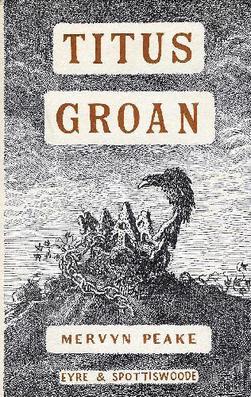Tower of Flint
"Over their irregular roofs would fall throughout the seasons, the shadows of time-eaten buttresses, of broken and lofty turrets, and, most enormous of all, the shadow of the Tower of Flints. This tower, patched unevenly with black ivy, arose like a mutilated finger from among the fists of knuckled masonry and pointed blasphemously at heaven. At night the owls made of it an echoing throat; by day it stood voiceless and cast its long shadow."
Fuchsia's attic
Split in three rooms; the lumber room, the acting room and the 'secret attic'. The lumber room is filled with clutter, junk and the most iconic piece from this room is a broken piano. The acting is a very open, spacious room in which Fuchsia imagines characters to occupy the space. The 'secret attic' is where Fuchsia sleeps and keeps her most treasured items. She can also look out onto the city from the window.
The Hall Of Bright Carvings
This is where the top three pieces of work (sculptures) are put on display. It is quite dark as the occupier keeps the shutters down. It also has an emerald piece, that would appear to be the main object of interest. The sculptures are of wood. The hall itself is very large in size, as would need be with all of the art of the city contained inside.
The Room Of Roots
A room consisting of "a thousand branching, writhing, coiling, intertwining, diverging, converging, interlacing limb" like branches. The stems thickened at a converging tall, narrow aperture on the far side of the room. The upper half has a pouring grey, amorphous light. It is described as a "labyrinth", "writhing maze" and a network of weird arms that rose and fell, dipped and clawed, motionless yet alive with serpentine rhythms.
This room is described, at first, as a room infested by plants with roots dominating the interior. However, the room is later reinforced to be a giant painting with immaculate detail. The giant painting also is strangely coloured.
The Great Kitchen
The Great Kitchen, is a part of the kitchen quarters that also contains the slaughter-house, the bakeries, the wine vaults and the underground network of the castle cellars. The Great Kitchen has a steaming, airless concentration, giving a sickening atmosphere that is only intensified by the sun's rays streaming through the high windows. The fires of the ovens, raging with the festivities, left the walls with moisture, that were built of grey slabs of stone. The Great Kitchen undergoes a constant flux of shifting figures with the momentary chaos .
The Great Kitchen
The Great Kitchen, is a part of the kitchen quarters that also contains the slaughter-house, the bakeries, the wine vaults and the underground network of the castle cellars. The Great Kitchen has a steaming, airless concentration, giving a sickening atmosphere that is only intensified by the sun's rays streaming through the high windows. The fires of the ovens, raging with the festivities, left the walls with moisture, that were built of grey slabs of stone. The Great Kitchen undergoes a constant flux of shifting figures with the momentary chaos .



















































